Cheek augmentation
Table of contents:
What is cheek augmentation?
High cheekbones are seen as a sign of beauty for women. Just look at women like Angelina Jolie and Kate Moss. As women tend to have fuller cheeks than men, they are seen as a sign of femininity. They radiate health and youth – as you can see in these photos. Cheek augmentation is often performed as part of a Facial Feminization Surgery.
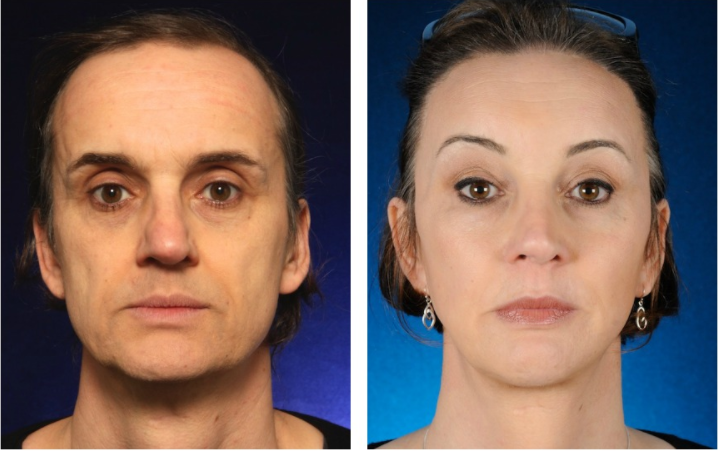
Some people don’t have high cheekbones, and others may have had high cheekbones in the past but they have become flatter over the years. Whatever the issue, we have a solution: cheek augmentation with implants or lipofilling. We enlarge your cheeks to make you look youthful and healthy again.
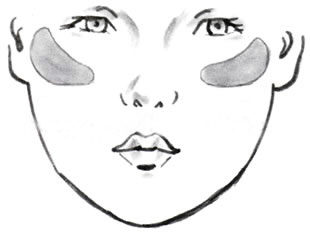
Implants or fat grafting?
There are two ways to perform cheek augmentation: fat grafting (where fat is taken from another part of your body, usually the abdomen, thighs or hips) or implants (if you don’t have enough fat).
1 Implants
At 2pass Clinic we use PEEK implants. Dr Bart van de Ven has performed facial feminization surgery on many transgender women. He prefers to use PEEK implants because they provide the best long-term results. This is because PEEK implants are designed to fit the patient’s needs. They are custom made by Avinent, following a CBCT scan. So they always fit perfectly and stay in the right place, and there is no risk of infection.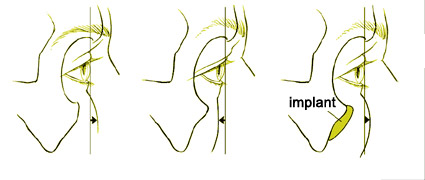
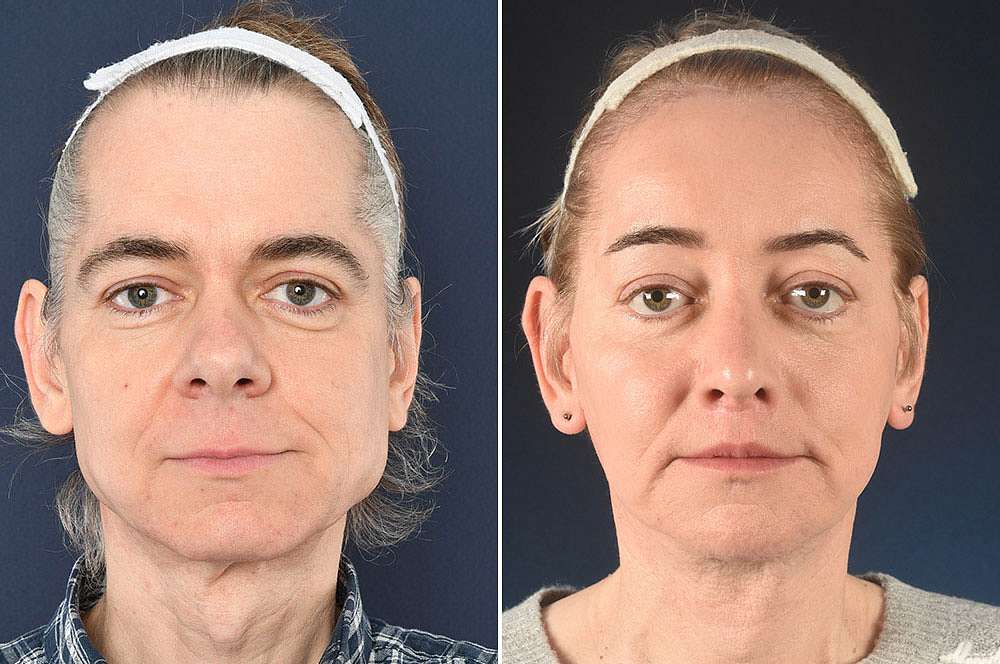






2 Fat grafting
If you naturally have enough fat, you can opt for cheek augmentation using fat grafting or lipofilling.
The benefits
- A natural result;
- No scar;
- Performed under local anesthesia.




















Procedure
Cheek augmentation surgery using implants
Cheek augmentation surgery takes 30 minutes to an hour and takes place under general anesthesia. If you choose this procedure, you don’t have to worry about scars.
- Incision—The incision is made either in your mouth in the gum above your upper teeth (paranasal implants) or just under the eyelashes (cheek implants).
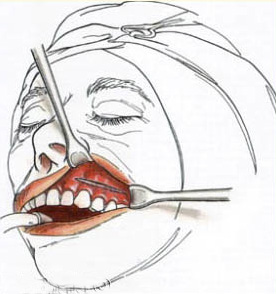
- The PEEK implants are shaped according to your preference with the help of a CT-scan that needs to be made several weeks before surgery. They are fastened using small screws so that they remain firmly in place.
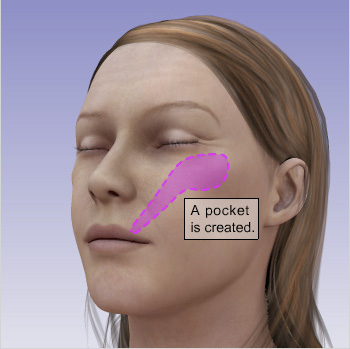
Fat grafting surgery
Lipofilling can be performed under either local or general anesthesia. Local anesthesia is only used when small volumes of fat are required. If this procedure is combined with other procedures, it will mostly be done under general anesthesia. The donor site is always infiltrated with a mixture of local anesthesia and adrenaline to reduce postoperative discomfort and bruising.
Recovery
The incision in your mouth is closed after surgery using dissolvable stitches – so they will disappear on their own. We recommend that you rinse your mouth with mouthwash two to three times a day. You will be given this mouthwash after your surgery. It helps keep your mouth free of bacteria and heals the wound. The stitches will have completely dissolved after about two weeks.
You will also experience the usual side effects of an operation:
- Swelling (the first two weeks)—Immediately after the surgery, the injected area can be swollen and bruised. In the beginning, the correction may look rather exaggerated because of the over-correction (see procedure). To reduce swelling, we recommend sleeping on three pillows so your face is positioned higher than the rest of your body.
- In about three weeks’ time approximately 80% of the bruising and swelling will have disappeared.
- Temporary numbness.
- Your cheeks may feel painful and stiff.
- After four months you get a good impression of what the final result after six months will be.
Frequently asked questions
What does this procedure cost?
You can find estimated prices here, after your consultation you will be informed of the exact prices of your operation. Prices are average and may vary depending on the exact treatment.
There are 3 options to receive a financial and operative proposal. You can either send us pictures and receive a quote and an FFS simulation, or you can book a Skype or a live consultation with Dr Bart van de Ven during which you will also receive a quote and FFS simulation. Click here if you want to get a general idea of FFS prices.
What happens if there are complications after the procedure and is this covered?
We will correct the complication if surgically possible, without charging any surgical fees. Hospital, material and traveling costs are for the expense of the patient.
Can I lose feeling (numbness) permanently in some areas following FFS surgery?
Some temporary numbness in any of the areas where bone work is done is an absolute certainty. That could include the scalp, forehead, chin, jaw or even cheek areas depending on where the surgery has been done. This happens because the soft tissue is detached from the bony area. Several thousand minor nerves are severed, and it will obviously take some while for those areas to heal. Up to 18 months of recovery time is not unusual, but it usually takes less time. You may not regain the same level of feeling as before.
Can I get this surgery if I’m a cis woman?
Yes, of course. We perform Facial Feminization Surgery on all women. Every woman is welcome at our clinic!
How long does it take for the final result to be visible and the bruises to disappear completely?
Recovery looks different for every patient, but bruising usually disappears after two to four weeks. The final result can be visible after a few months, but it may also take longer than a year. All information on recovering from FFS can be found on our recovery page.
What happens with the stitches in my mouth?
They dissolve on their own in 5–7 weeks. They don’t have to be removed. If they would still be in your mouth after 7 weeks, you can easily remove them just by pulling on them, as they will immediately break due to the fact they will be mostly dissolved already.
What about smoking?
As smoking counteracts wound healing we strongly advise against smoking during the 3 weeks before surgery until 3 weeks after surgery. Smoking dramatically increases the risk of skin necrosis and should be avoided at all times.
Where will the swelling appear?
Immediately after surgery, the swelling will be mostly in areas of loose connective tissue (cheeks, lips, around eyes). During the first few days, the swelling will move downwards towards the lower jaw and neck due to gravity. Swelling and bruising differ strongly from one person to another and can appear anywhere. Preferential places are around the eyes and in the lips, but can also involve the lower jaw and neck. Bruising may not appear immediately and will gradually fade over the course of several (2-5) weeks.
How long will I have swelling?
About 80% of swelling will have disappeared after 2 to 3 weeks. For a final result you’ll have to wait for up to 1 year.
We are doing our very best to keep this information up-to-date. In case you see anything that no longer seems accurate, or in case you have a question, please fill out the form below!
